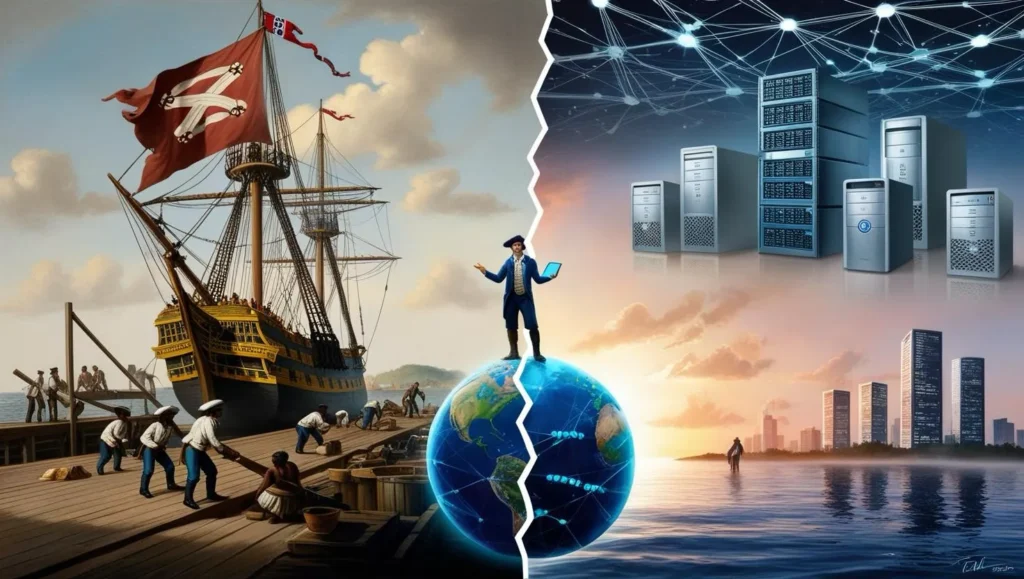Digital colonialism and historical colonialism share dynamics of power and exploitation but operate within different contexts and mechanisms. Both, however, carry the hallmark of a capitalist project of domination and accumulation.
Historical Colonialism
Historical colonialism, which gained momentum in the 15th century, involved territorial conquest, the exploitation of natural resources, and the control of the labor of indigenous peoples. It was sustained by violence, dispossession, and the imposition of a Eurocentric worldview, resulting in the suppression of Global South cultures.
European colonial powers justified these practices through the “civilizing mission,” claiming they were bringing progress to the conquered territories. In this endeavor, commercial enterprises were fundamental instruments of economic exploitation, working closely with colonial states.
Digital Colonialism
In the contemporary context, digital colonialism has replaced physical territories with digital landscapes. Large technology companies, primarily from the Global North, exert control through data extraction and user attention. These “resources” are transformed into commodities for profit and power expansion.
Digital colonialism disguises itself under the veneer of technological innovation and altruism, with promises to connect the world and democratize access to information. However, the same companies that promote this narrative often exploit fragile infrastructures and inefficient regulations in Global South countries, perpetuating inequalities.
Comparing the Two Models
Exploited resources
In historical colonialism, the focus was on minerals, agricultural products, and labor. In digital colonialism, the most valuable assets are personal data and user attention.
Means of control
Historical colonialism relied on military force, the imposition of laws, and direct territorial administration. Digital colonialism uses online platforms, algorithms, and digital infrastructures to exercise power.
Key actors
While European powers and their commercial enterprises led historical colonialism, digital colonialism is dominated by Big Tech giants such as Google, Apple, Facebook, Amazon, and Microsoft (GAFAM), alongside emerging Chinese companies.
Justifications
Historical colonialism was sustained by ideologies like the “civilizing mission.” Digital colonialism, in turn, employs the narrative of technological progress and digital inclusion.
Cultural impacts
Both marginalize non-Western cultures. Digital colonialism also compromises digital sovereignty, transforming information into a commodity controlled by a few.
Similarities and Contradictions
Both types of colonialism share notable similarities. Both reproduce power asymmetries, exploit resources for the benefit of a minority, and pursue capital accumulation. Both promote forms of cultural and ideological domination, albeit under different labels.
The great irony of digital colonialism is that it presents itself as a solution to inequalities while reproducing and amplifying the same structures of exploitation it claims to address. Behind the discourse of “connecting the world,” lies a dynamic of monopoly and control.
Conclusion
Although they operate in different contexts, historical and digital colonialism are intrinsically linked. Digital colonialism perpetuates historical inequalities and reinforces power relations established during traditional colonialism but with new instruments and landscapes. To resist these dynamics, promoting digital sovereignty, fairer regulation, and initiatives that value inclusion and diversity is essential.
Victor T. Murari
Art History, Education & Artificial Intelligence | PhD | Advancing Educational and Cultural Narratives through AI Integration

